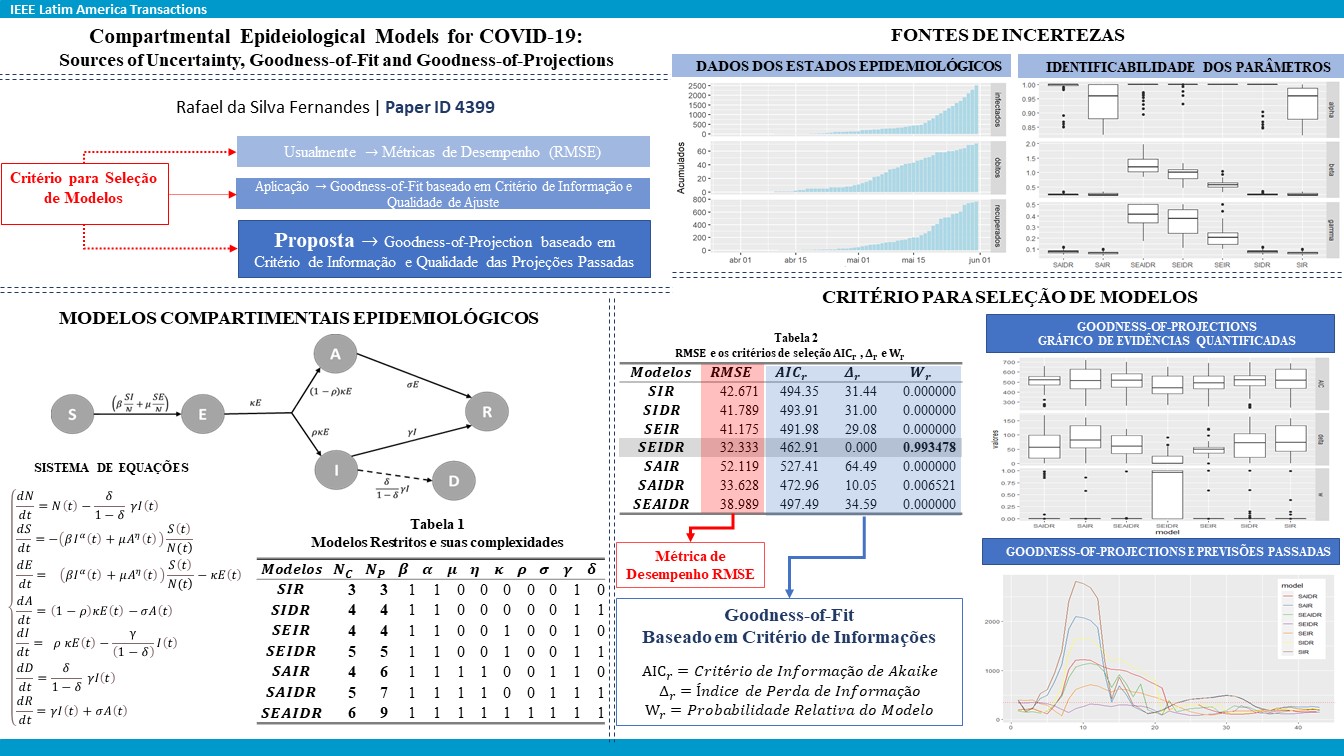Compartmental Epidemiological Models for Covid-19: Sources of Uncertainty, Goodness-of-Fit and Goodness-of-Projections
Keywords:
Covid-19, Compartimental Epidemiological Models, Godness-of-fit, Mathematical ModellingAbstract
Compartmental Epidemiological Models have been widely used to describe the dynamics of infectious transmission diseases. These models describe the temporal progression of case counts related to an epidemic and evaluate hypotheses about the possible underlying mechanisms that explain patterns in the observed data, with distinct spatial and temporal scales. Furthermore, the models can vary in complexity, whether in terms of the number of parameters or the number of variables that characterize epidemiological states. Therefore, this approach is essential to select adequate models that characterize better transmission dynamics. This generates reliable estimates of the main parameters, which is a critical factor in minimizing uncertainty. This study aims to apply the main epidemiological compartmental models to the initial data of Covid-19 in the city of Parauapebas / PA - Brazil. A model selection criterion is proposed that, in addition to taking into account the quality of fit, mechanisms are added that capture information about past forecasts. Such a proposal contributes by providing subsidies for an adequate selection of the best model in order to enable more precise characterization of the transmission dynamics and with less loss of information.
Downloads


